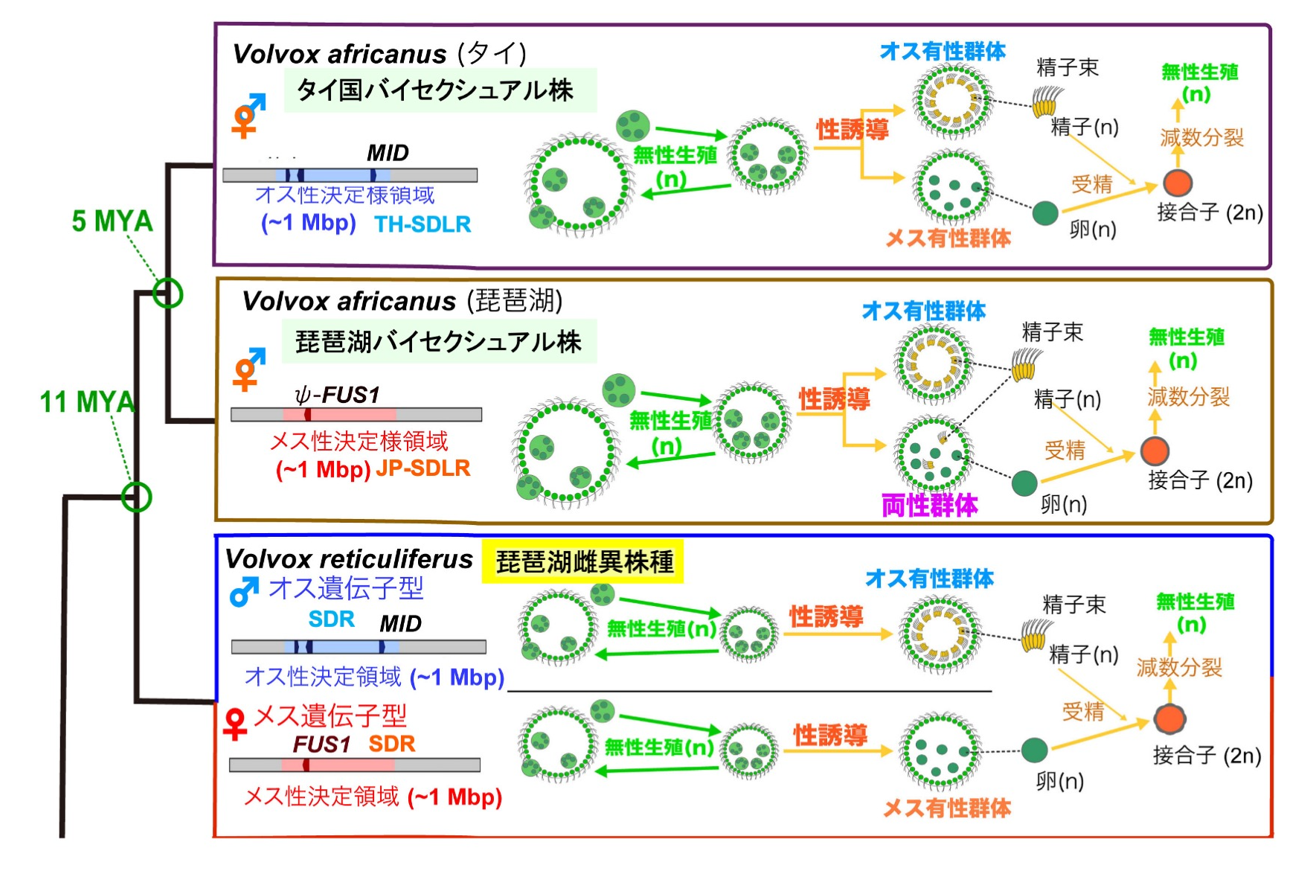DATE2023.06.22 #Press Releases
Male sex chromosomes alone evolve into a bisexual species.
Disclaimer: machine translated by DeepL which may contain errors.
--The whole genome analysis of a non-model species of the green alga Volvoxclarifies--.
National Institute for Environmental Studies
Japan Women's University
Karasin University
Khon Kaen University
National Institute of Genetics
Graduate School of Science, The University of Tokyo
Summary of Presentation
Volvox is a beautiful green alga that has been compared to a green jewel. Volvox has female and male sexes (sex) that form eggs and sperm. There are also "dioecious" species, in which females and males are determined by different genotypes, and "bisexual" species, in which both sexes form eggs and sperm within a single culture strain of the same genotype. Evolution from dioecious species to bisexual species has been observed in many members of Volvox, which is important in terms of "sexual diversity that produces biodiversity.
In this study, Kayoko Yamamoto, Academic Support Staff at Japan Women's University (also a JSPS Research Specialist), and Osamu Matsuzaki, Senior Academic Support Staff at the National Institute for Environmental Studies, in collaboration with researchers at the National Institute of Genetics, The University of Tokyo, Khon Kaen University, and Karasin University, have studied the evolution of a domestic Thai strain, Volvox africanus, to explore its evolution into a bisexual species. They undertook a whole-genome analysis of Volvox africanus to explore its evolution into a bisexual species. It has been thought that the evolution of Volvox from a dioecious species to a bisexual species requires the incorporation of male-specific genes into the female sex chromosomes, and that the sex chromosomes are different in males and females, each possessing female- or male-specific genes. However, the bisexuality of the Thai strains has not been fully investigated. However, in the bisexual Thai strain, all of the female sex chromosomes were missing, while most of the male sex chromosomes remained intact. This suggests that sex chromosomes have an unresolved function other than distinguishing females and males, and future research is expected.

Figure: Evolution of the massive sex-determination-like region (SDLR) of the bisexual species Volvox africanus revealed by whole genome analysis.
Visiting Researcher Hisayoshi Nozaki (at the time of the research: Project Researcher) of the Department of Biological Sciences participated in the research results.
For more information, please visit the website of the National Institute for Environmental Studies.


